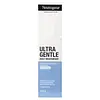What's inside
What's inside
 Key Ingredients
Key Ingredients

 Benefits
Benefits

 Concerns
Concerns

 Ingredients Side-by-side
Ingredients Side-by-side

Water
Skin ConditioningGlycerin
HumectantDicaprylyl Ether
EmollientCaprylic/Capric Triglyceride
MaskingNiacinamide
SmoothingCetyl Alcohol
EmollientCetearyl Alcohol
EmollientPalmitic Acid
EmollientDimethicone
EmollientPanthenol
Skin ConditioningPhenoxyethanol
PreservativeStearic Acid
CleansingCarbomer
Emulsion StabilisingCaprylyl Glycol
EmollientCeteareth-20
CleansingSodium Hydroxide
BufferingChlorphenesin
AntimicrobialSodium Citrate
BufferingTocopheryl Acetate
AntioxidantCitric Acid
BufferingWater, Glycerin, Dicaprylyl Ether, Caprylic/Capric Triglyceride, Niacinamide, Cetyl Alcohol, Cetearyl Alcohol, Palmitic Acid, Dimethicone, Panthenol, Phenoxyethanol, Stearic Acid, Carbomer, Caprylyl Glycol, Ceteareth-20, Sodium Hydroxide, Chlorphenesin, Sodium Citrate, Tocopheryl Acetate, Citric Acid
Water
Skin ConditioningGlycerin
HumectantTheobroma Cacao Seed Butter
EmollientCaprylic/Capric Triglyceride
MaskingVitis Vinifera Seed Oil
EmollientCetearyl Alcohol
EmollientGlyceryl Stearate
EmollientBenzyl Alcohol
PerfumingPhenoxyethanol
PreservativeSodium Stearoyl Glutamate
CleansingHydrogenated Starch Hydrolysate
HumectantSodium Citrate
BufferingSqualane
EmollientXanthan Gum
EmulsifyingCitric Acid
BufferingPropanediol
SolventDehydroacetic Acid
PreservativeErythritol
HumectantLecithin
EmollientSodium Hyaluronate
HumectantDavidsonia Jerseyana Fruit Extract
AntioxidantHibiscus Esculentus Fruit Extract
Skin ConditioningAphanizomenon Flos-Aquae Extract
HumectantPotassium Sorbate
PreservativeTocopherol
AntioxidantHelianthus Annuus Seed Oil
EmollientWater, Glycerin, Theobroma Cacao Seed Butter, Caprylic/Capric Triglyceride, Vitis Vinifera Seed Oil, Cetearyl Alcohol, Glyceryl Stearate, Benzyl Alcohol, Phenoxyethanol, Sodium Stearoyl Glutamate, Hydrogenated Starch Hydrolysate, Sodium Citrate, Squalane, Xanthan Gum, Citric Acid, Propanediol, Dehydroacetic Acid, Erythritol, Lecithin, Sodium Hyaluronate, Davidsonia Jerseyana Fruit Extract, Hibiscus Esculentus Fruit Extract, Aphanizomenon Flos-Aquae Extract, Potassium Sorbate, Tocopherol, Helianthus Annuus Seed Oil
 Reviews
Reviews

Ingredients Explained
These ingredients are found in both products.
Ingredients higher up in an ingredient list are typically present in a larger amount.
This ingredient is an emollient, solvent, and texture enhancer. It is considered a skin-softener by helping the skin prevent moisture loss.
It helps thicken a product's formula and makes it easier to spread by dissolving clumping compounds.
Caprylic Triglyceride is made by combining glycerin with coconut oil, forming a clear liquid.
While there is an assumption Caprylic Triglyceride can clog pores due to it being derived from coconut oil, there is no research supporting this.
Learn more about Caprylic/Capric TriglycerideCetearyl alcohol is a mixture of two fatty alcohols: cetyl alcohol and stearyl alcohol. It is mainly used as an emulsifier. Emulsifiers help prevent the separation of oils and products. Due to its composition, it can also be used to thicken a product or help create foam.
Cetearyl alcohol is an emollient. Emollients help soothe and hydrate the skin by trapping moisture.
Studies show Cetearyl alcohol is non-toxic and non-irritating. The FDA allows products labeled "alcohol-free" to have fatty alcohols.
This ingredient is usually derived from plant oils such as palm, vegetable, or coconut oils. There is debate on whether this ingredient will cause acne.
Due to the fatty acid base, this ingredient may not be Malassezia folliculitis safe.
Learn more about Cetearyl AlcoholCitric Acid is an alpha hydroxy acid (AHA) naturally found in citrus fruits like oranges, lemons, and limes.
Like other AHAs, citric acid can exfoliate skin by breaking down the bonds that hold dead skin cells together. This helps reveal smoother and brighter skin underneath.
However, this exfoliating effect only happens at high concentrations (20%) which can be hard to find in cosmetic products.
Due to this, citric acid is usually included in small amounts as a pH adjuster. This helps keep products slightly more acidic and compatible with skin's natural pH.
In skincare formulas, citric acid can:
While it can provide some skin benefits, research shows lactic acid and glycolic acid are generally more effective and less irritating exfoliants.
Most citric acid used in skincare today is made by fermenting sugars (usually from molasses). This synthetic version is identical to the natural citrus form but easier to stabilize and use in formulations.
Read more about some other popular AHA's here:
Learn more about Citric AcidGlycerin is already naturally found in your skin. It helps moisturize and protect your skin.
A study from 2016 found glycerin to be more effective as a humectant than AHAs and hyaluronic acid.
As a humectant, it helps the skin stay hydrated by pulling moisture to your skin. The low molecular weight of glycerin allows it to pull moisture into the deeper layers of your skin.
Hydrated skin improves your skin barrier; Your skin barrier helps protect against irritants and bacteria.
Glycerin has also been found to have antimicrobial and antiviral properties. Due to these properties, glycerin is often used in wound and burn treatments.
In cosmetics, glycerin is usually derived from plants such as soybean or palm. However, it can also be sourced from animals, such as tallow or animal fat.
This ingredient is organic, colorless, odorless, and non-toxic.
Glycerin is the name for this ingredient in American English. British English uses Glycerol/Glycerine.
Learn more about GlycerinPhenoxyethanol is a preservative that has germicide, antimicrobial, and aromatic properties. Studies show that phenoxyethanol can prevent microbial growth. By itself, it has a scent that is similar to that of a rose.
It's often used in formulations along with Caprylyl Glycol to preserve the shelf life of products.
Sodium Citrate is the sodium salts of citric acid. In skincare, it is used to alter pH levels and acts as a preservative.
Its main functions are to maintain the pH of a product and neutralize metal ions.
The acidity of our skin is maintained by our glands and skin biome; normal pH level of skin is slightly acidic (~4.75-5.5).
Being slightly acidic allows our skin to create an "acid mantle". This acid mantle is a thin barrier that protects our skin from bacteria and contaminants.
Learn more about Sodium CitrateWater. It's the most common cosmetic ingredient of all. You'll usually see it at the top of ingredient lists, meaning that it makes up the largest part of the product.
So why is it so popular? Water most often acts as a solvent - this means that it helps dissolve other ingredients into the formulation.
You'll also recognize water as that liquid we all need to stay alive. If you see this, drink a glass of water. Stay hydrated!
Learn more about Water